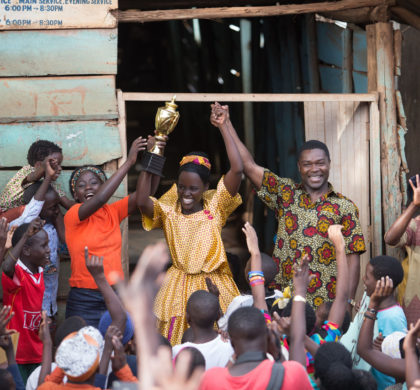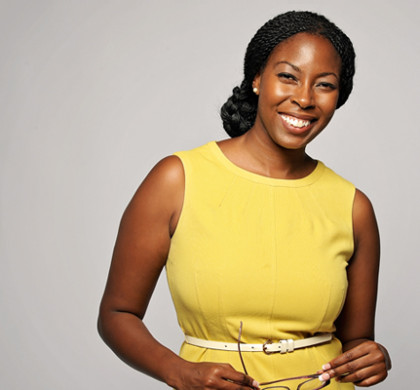6 Branding Lessons You Can Learn from South Africa

02 Nov 2015
I returned from my transformational trip to South Africa on Friday, October 30th, and spent most of my plane ride back to DC scheming about how to return to South Africa ASAP. While I was there, I made a number of observations about the country and what makes Brand South Africa a great brand—despite many of its ongoing challenges. Whether you’re a country or a consultancy, these are all lessons you would do well to incorporate into your own branding toolbox.
1. Just about everywhere I turned, there was phenomenal customer service and hospitality. From the time I arrived in Johannesburg at the Sandton Lodge Inanda (the beautiful bed and breakfast where I stayed), to the time I stepped on the plane headed back to Washington, DC via New York, I experienced an incredible level of customer service and hospitality from everyone I met. You can bet that’s one of the things that is going to make me want to return—often—to South Africa. If you’re trying to figure out how to improve your sales and service, take a cue from South Africa and start with how you treat your customers.
2. South Africans are fantastic Brand Ambassadors. As stated by Gilian de Gouveia from Proudly South African—an organization which promotes products and services made by South Africans—the country’s people are its greatest asset. This is the case with any business/brand. Almost everyone who I met in this very diverse country, proudly proclaimed their South African identity and owned their brand story. This was also prevalent at the Brand Africa 100 Awards Gala I attended on the evening I arrived. Hosted by Brand Africa, an organization led by branding expert, Thebe Ikalafeng, I had an opportunity to meet a number of amazing individuals: many of whom were able to provide valuable insights into the history and culture of the country.
3. The brand story was consistent. What makes a Brand Ambassador even more valuable is not when he or she says the brand is the best thing out there; it’s when just about every Brand Ambassador has the same story. That’s consistency—and it’s incredibly important when building your brand. With everyone I met, colleagues, new friends, and Uber drivers alike, I got the same story. Good and bad, I found no contradictions in any of the historical, economical, cultural or social lessons I received from everyone I encountered during my trip. The country has done a great job developing a consistent brand story and ensuring its citizens know it, and know it well.
4. South Africa has kept up with tech and with trends. During my entire stay (mainly in Johannesburg) I had almost no issues with my internet or wireless services—a sign of well-maintained and up-to-date technology. In line with the “going green” movement picking up steam around the world, the country was hosting the 2015 Ecomobility Festival in Sandton. The event (which made it difficult and inconvenient to drive in certain parts of the city), was created to encourage more people in the city to travel by foot, bike or public transport in an effort to reduce emissions and other traffic-related issues. And I have to say that using Uber in South Africa was probably even more enjoyable than using it in the States! How can your business do better at keeping up with tech and trends?
5. The country has a unique brand. South Africa’s diversity was very reminiscent of that of many parts of the U.S. I would estimate that only 1 in 2 people I met in South Africa was actually a native of the country. However, South Africa’s diversity was also reflected in its architecture and landscape. There was nothing cookie cutter about the buildings (residential or commercial) that surrounded me during my stay. You could definitely see the global influence and the mix of African and European aesthetics in the architecture. It was almost impossible to find any two buildings which looked alike. With respect to the landscape, Johannesburg stakes claim to having the largest man-made jungle of any city or country in the world—an estimated 6 million trees planted with another 200,000 planned in the next few years. The expansive greenery make for an amazing landscape and add to the uniqueness of South Africa’s brand.
6. The government’s handling of the student protests about rising school fees tarnished the brand with the global community. As with any brand, there are always challenges. And indeed, while I was there, I found out there were protests which originated in Cape Town and were growing in and around Johannesburg by students who were dissatisfied with the government’s handling of rising costs for a university education. The ANC government, which has been in power since 1994, had made a promise to students that it would work to provide free and low-cost secondary education as a right.
Instead, due to corruption and mismanagement of resources, the already high costs for higher education were set to rise by almost 12%! Unfortunately, the government handled the situation in the worst way possible—resorting to tear gas, physical abuse, and the arrest of many students; a solution which exacerbated the problem. However, the activism and unity of the students forced the ANC government to make a number of concessions—including an announcement that school fees would not rise in 2016. The lesson here is, if there’s a problem with your Brand Ambassadors, nip it in the bud right away by addressing it in a way that is fair and just before it has a chance to ruin your brand. Click here for updates on the student protests in South Africa.
As with any brand, there are those characteristics which aren’t so great; however, if you can work on fixing the negative while finding the good and capitalizing on that, you can create a strong brand which will stand the test of time. Happy branding!
What are some branding lessons you’ve learned from other countries?
Recommended Posts

In “Queen of Katwe”, Hollywood Finally Gets Africa Right
18 Oct 2016 - Africa + Diaspora, Art + Culture

This One Book Could Help Save Your Relationship
15 Jun 2016 - Relationships



